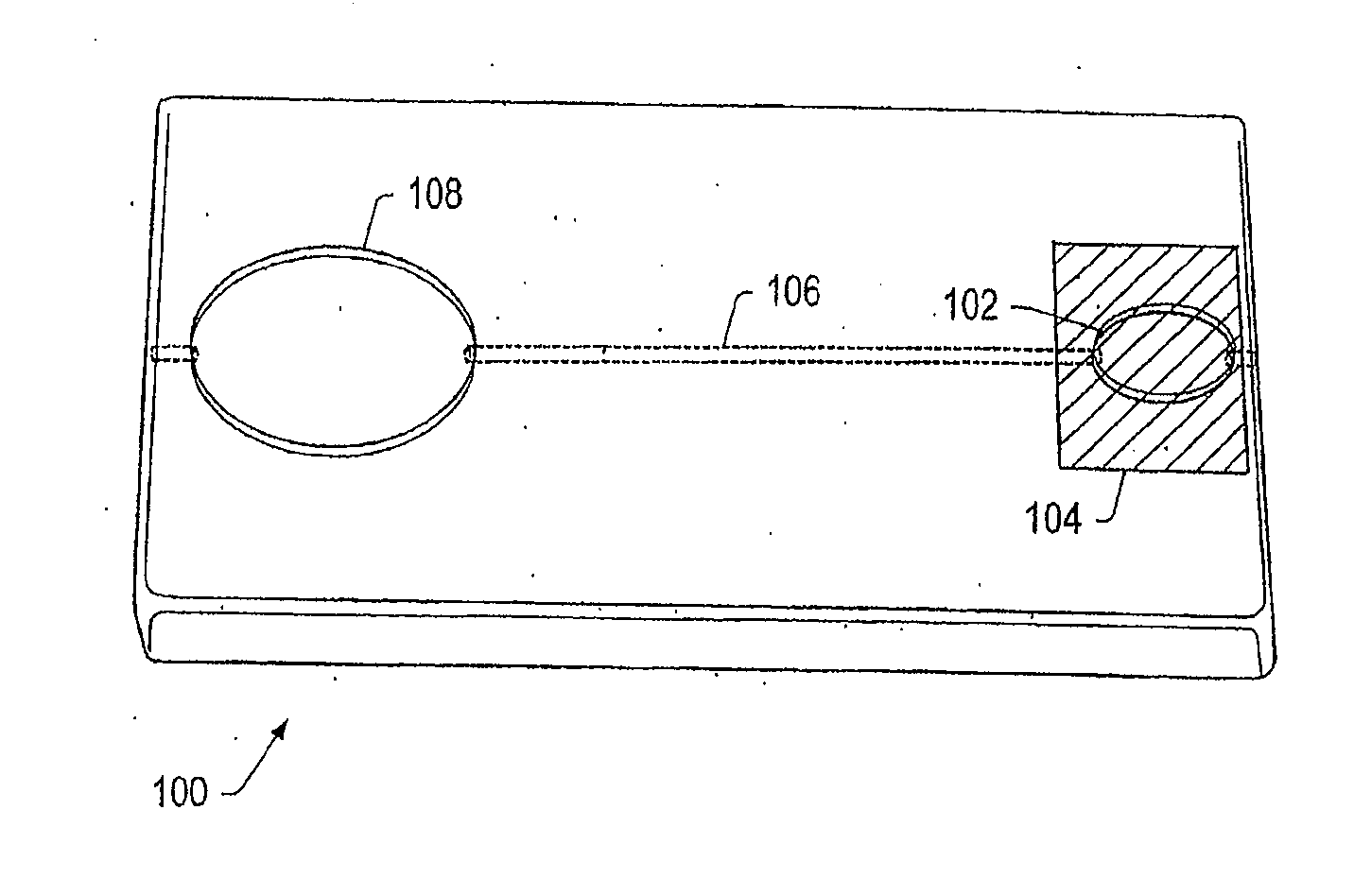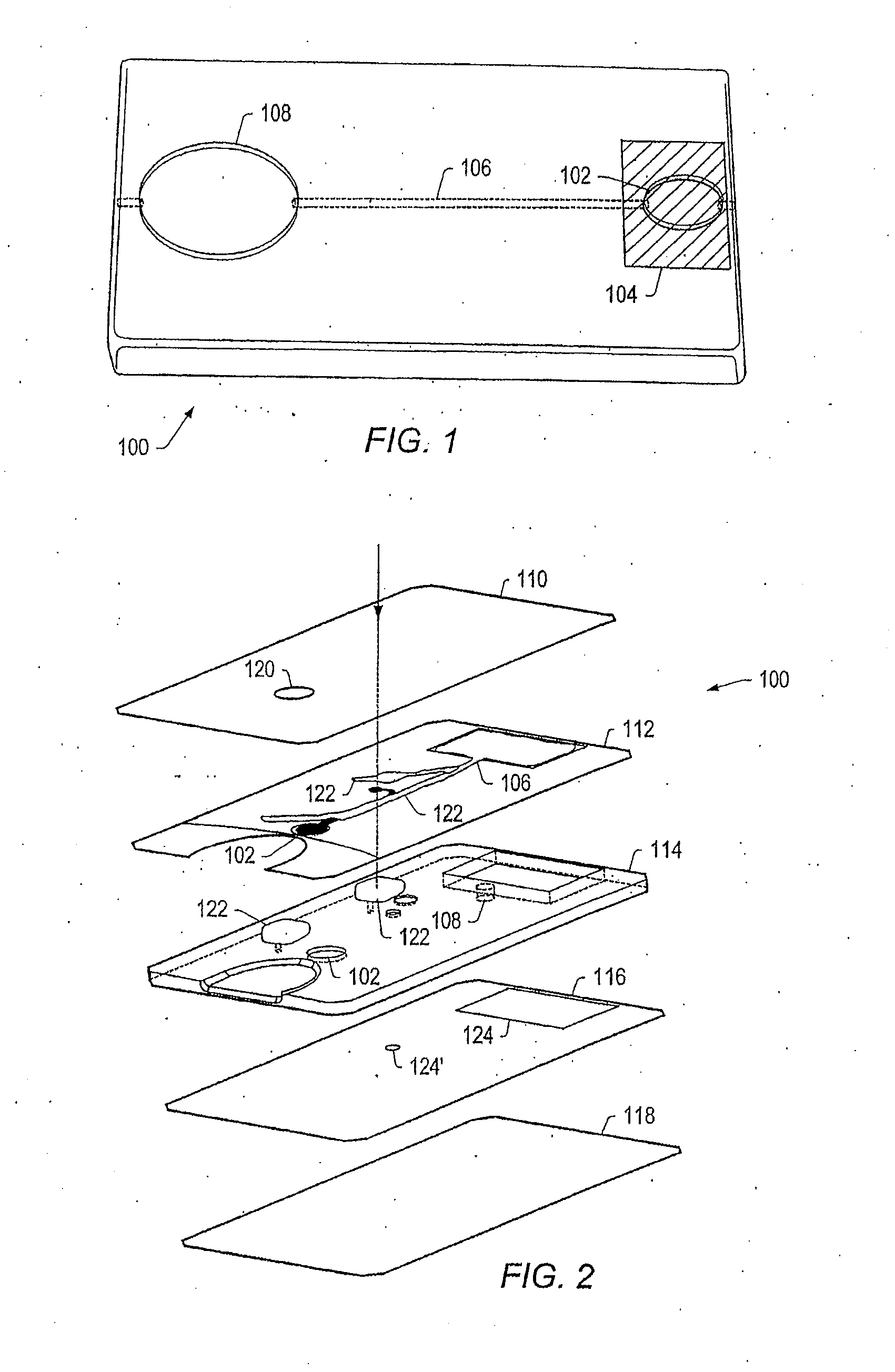Detecting multiple types of leukocytes
a leukocyte and multiple type technology, applied in the field of leukocyte detection multiple types, can solve the problems of particle attachment, particle inability to pass through, cell differential obtained from hematology analyzers, flow cytometers, etc., and achieve the effect of reducing neutrophils
- Summary
- Abstract
- Description
- Claims
- Application Information
AI Technical Summary
Benefits of technology
Problems solved by technology
Method used
Image
Examples
example
[0364] A non-limiting example of a multi-functional detection system is set forth below.
[0365] An analyte-detection system was used for the concurrent measurement of both CRP and WBCs. The analyte-detection system included a multi-functional cartridge. The cartridge included a particle-based membrane detection system and a membrane-based detection system. The membrane-based detection system was configured to capture and detect blood cells, while the particle-based detection system was configured to interact with blood proteins. The detection systems were each coupled to a fluid delivery system. The two detection systems shared a common computer. The computer controlled fluid delivery systems and optical components. The fluid delivery systems provided fluids for the analysis. The optical components assisted in microscopic evaluation of signals collected from the two detection systems.
[0366] The particle-based detection system of the cartridge was used to perform a CRP-specific immu...
PUM
| Property | Measurement | Unit |
|---|---|---|
| diameter | aaaaa | aaaaa |
| width | aaaaa | aaaaa |
| width | aaaaa | aaaaa |
Abstract
Description
Claims
Application Information
 Login to View More
Login to View More - R&D
- Intellectual Property
- Life Sciences
- Materials
- Tech Scout
- Unparalleled Data Quality
- Higher Quality Content
- 60% Fewer Hallucinations
Browse by: Latest US Patents, China's latest patents, Technical Efficacy Thesaurus, Application Domain, Technology Topic, Popular Technical Reports.
© 2025 PatSnap. All rights reserved.Legal|Privacy policy|Modern Slavery Act Transparency Statement|Sitemap|About US| Contact US: help@patsnap.com



